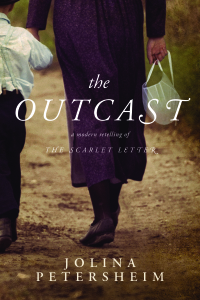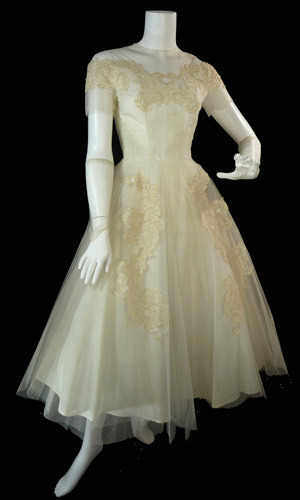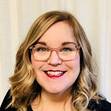Amy Sue Nathan's Blog: Women's Fiction Writers, page 36
September 2, 2013
A New Year, A New Post, And A New Look For Women’s Fiction Writers
 In honor of forging ahead with my new novel (untitled), jumping into my new stage of life (empty nest), celebrating the Jewish New Year (5774) and scheduling many new book events (calendar to be updated),
Women’s Fiction Writers has a new post by me and—a whole new look (but no more parenthetical phrases)!
In honor of forging ahead with my new novel (untitled), jumping into my new stage of life (empty nest), celebrating the Jewish New Year (5774) and scheduling many new book events (calendar to be updated),
Women’s Fiction Writers has a new post by me and—a whole new look (but no more parenthetical phrases)!
I hope you like the new digs as much as I do!
— Amy xo
A Writer’s Ring Of Truth
 It’s been a while since I wrote my own post on my own blog. I’ve spent the summer promoting The Glass Wives, writing my next novel (still untitled), working on freelance editing projects, looking for a job outside the house (I’m “opting in”) and mostly, getting ready to send both kids off to college. No, it didn’t take all summer to shop and pack and prepare the kids. It took all summer to prepare me.
It’s been a while since I wrote my own post on my own blog. I’ve spent the summer promoting The Glass Wives, writing my next novel (still untitled), working on freelance editing projects, looking for a job outside the house (I’m “opting in”) and mostly, getting ready to send both kids off to college. No, it didn’t take all summer to shop and pack and prepare the kids. It took all summer to prepare me.
And it will probably take a little longer.
It’s not like I’m new to life-altering changes, but each one seems to be like the first. Except for one thing.
This time I know I’ll be fine.
How do I know? Because I constantly remind myself that I’ve done this “starting from scratch” thing before. That writing and life is strewn with uncertainty. That there is no other option but to be fine. I remind myself often of how far I’ve come, how much I have accomplished, and how many choices I have (even when it seems I have none, which is often). I remind myself that there is more to be grateful for than not. And when I forget, I remind myself to remember.
I started this slightly obsessive reminder system when I received my first check for two essays published in a major newspaper in 2006, by putting a ring on my finger. That’s right. I put a ring on it.
I didn’t spend the whole check or bedeck myself with razzle-dazzle. I chose something I could wear every day, that would not distract me. I knew it was merely a symbol, a token, a visual reminder of the chance I’d taken in reaching out to an editor in a fit of confidence tinted with naïveté. In a matter of four years I’d been divorced, my ex-husband had died, I was raising two kids alone, and after years as a stay-home mom, a year of blogging and writing for ezines (remember those?) I’d sent an email to an editor at a major newspaper and after lots of hard work, I was forging a freelance career with no idea that would lead to more freelance writing and editing, and publishing a novel.
But I didn’t buy the ring as a reward, I bought it as a reminder. While rings are often the sign of a promise, mine was a proclamation.
I can do anything.
The ring may be subtle but the message is strong. And this is one that needs to be.
Years have passed. Stuff has happened. Big stuff and small stuff. Good and bad stuff. Writer stuff and non-writer stuff. I wear that ring when I write my novels and essays and I wore that ring when I went by myself to New York to meet my agent and editor. I wore it when my best friend was in big-time surgery and I wore it to an event where I’d see people I didn’t like (and had to be engaging and nice). I wore when I spoke to a hundred people about my book, (which I like very much).
See? I can do anything.
Probably most important of all, I have worn this ring to move each of my kids into college. Correction. I have worn this ring to drive away after moving each kid into college.
Anything.
It might seem silly, my little ring of truth, but in its simplicity it reminds me of the power in an inkling, in taking a chance and what can happen when I do. It reminds me of the beauty in a small moment, that perfect word, a polished paragraph, a game of fetch with the dog. I reminds me that in every tiny achievement, every baby step, there is the possibility for something more. Something big. It reminds me that if I conquered the past I can handle the future, no matter surprises or hardships it brings.
Because I can do anything.
And if I can do anything, so can you.
I hope that rings true.
Amy xo


August 28, 2013
Debut Author Jolina Petersheim Retells A Classic Story, Rebuilds A Foundation, And Focuses On Redemption
In reading and in writing I’ve found the most engaging stories were very personal for the author. That means different things of course. For some it’s about reinventing a personal tale. For others it’s about discovering something brand new. For debut author Jolina Petersheim this means retelling a classic story based on some real life situations, and bringing her Mennonite heritage to new light.
Please welcome Jolina Petersheim to Women’s Fiction Writers!
Amy xo
Retelling A Classic Story, Rebuilding A Foundation, And Focusing On Redemption
by Jolina Petersheim
When I sent my debut novel The Outcast out to gather endorsements, New York Times bestselling author Julie Cantrell replied that my story was riveting, but she had one question:
You said you’re Mennonite, so I have to ask . . . is it really like this? I struggled so much with the role of women in this community. I’m curious to know if it’s like that today.
I had to tell her that, in the most conservative Old Order sects, it is still like that today.
Though I’m Mennonite only by heritage, my entire life I’ve come into contact with the Old Order Mennonite and Amish communities. My family moved from Lancaster, Pennsylvania, when I was three years old, but my transplanted childhood remained firmly attached to our Mennonite roots. I believe my parents found solace in finding a community that reminded us that, though we were fourteen hours away from home, we were not alone in this foreign Tennessee land.
The Outcast’s fictional story, a modern retelling of The Scarlet Letter set in an Old Order Mennonite community in Tennessee, is not based on any event that transpired in this community we used to visit when I was child. However, I saw enough heartache there to know that the Gentle People struggle with the fallibility of man as much as the Englisch. I will not go into details to protect the innocent party, but the family we used to visit was fatherless. He was not allowed to step foot on the property, which he couldn’t if he had wanted to. He was in prison.
Have you ever read about an abusive Old Order Mennonite father? Have you ever read about an Older Order Mennonite woman who commits adultery?
I am sure that you have not. Or if those Amish fiction books exist, they are rare. Because of this, I did not know if I had the courage to place my heritage in such a light. Could I reveal that the horse and buggy communities—that capture Englischers’ interest around the globe as the last standing Utopia—are sometimes composed of smoke screens and mirrors? That we are not the only ones who put up a façade?
The catalyst that gave me strength to tell The Outcast’s story was when another story was told to me about the power of desire and the reverberating cost after that desire was left unchecked. It was a story that, shockingly enough, took place in an idyllic Old Order Mennonite community.
The repercussions from this tragic affair trickled down through the generations until one woman stood up against the curse and sought repentance and healing. This woman’s bravery brought much redemption; I like to believe the family is still being redeemed today.
I never imagined my debut novel would tap into my Mennonite heritage. However, this true story showed me there was not only the potential to put a different spin on a popular genre, but a need to reveal how difficult it is for an Old Order Mennonite woman, Rachel Stoltzfus, to provide for herself and her illegitimate child after being exiled from the community’s fold.
Through The Outcast, Rachel – the modern Hester Prynne character – is able to find employment and room and board with a brash ex-Amish woman named Ida Mae. When Rachel’s son’s illness conjures forth her past, she has enough distance from the community to understand the scarring she went through as a child, which led her to the point she would risk everything just to see herself reflected in another man’s eyes.
Because of this unusually dark subject matter, I did not know how The Outcast would be accepted by the Plain community. Mere days after its July 1 release, I received this message from a reader who was once part of the Amish church:
I remember the intense attraction the other church people had about this girl who was shunned. They wanted to hear about her sins, and her shortcomings. They would gasp in shock at the terrible things she was supposedly doing. I would sometimes look at her, in her eyes, and see fierce determination and pride, and yet an almost nauseous look of hurt. She did not defend herself or engage in the gossip. There were a couple of times in reading The Outcast that I felt like I could not breathe for the pain that Rachel was feeling. I think I know now what my friend went through. Your book was so authentic: the German words, Rachel’s loving yet harsh mother. It felt like more than a book to me.
This priceless message and others like them are a testament to the beauty of tearing down a façade and constructing from a new foundation. Through The Outcast, I hope readers will see that our lives do not have to be built around smoke screens and mirrors, but we can reveal our darkest places and let the power of redemption . . . redeem.
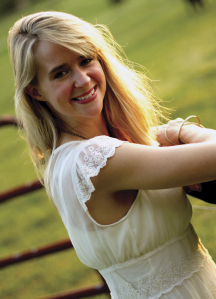 Jolina Petersheim holds degrees in English and communication arts from the University of the Cumberlands. Though The Outcast is her first novel, her writing has been featured in venues as varied as radio programs, nonfiction books, and numerous online and print publications. Her website is syndicated with The Tennessean’s “On Nashville” blog roll, as well as featured on other creative writing sites. Jolina and her husband share the same unique Amish and Mennonite heritage that originated in Lancaster County, Pennsylvania, but now live in the mountains of Tennessee with their young daughter.
Jolina Petersheim holds degrees in English and communication arts from the University of the Cumberlands. Though The Outcast is her first novel, her writing has been featured in venues as varied as radio programs, nonfiction books, and numerous online and print publications. Her website is syndicated with The Tennessean’s “On Nashville” blog roll, as well as featured on other creative writing sites. Jolina and her husband share the same unique Amish and Mennonite heritage that originated in Lancaster County, Pennsylvania, but now live in the mountains of Tennessee with their young daughter.
You can find Jolina on Facebook, Twitter, and Goodreads.


August 26, 2013
Why Book Blogger And Author Stephanie Elliot Stopped Writing (And Then Started Again)
Write every day. Write what you know. Write to a word count. Write morning pages.
Or not.
Sometimes a writer can’t write. Or doesn’t want to write. And I think the best thing to remember is that not everything in life is forever. I tend to forget that because permanence is kind of a theme with me, but it’s true. Now I try to remember that every day. Temporary. Just for now. Change. Change back. When a writer stops writing it doesn’t mean she or he will never write again. Not every writer writes through the bad times. Not every writer writes through the good times, or sick times, or on vacation, in the middle of the night.
Stephanie Elliot, whom you might recognize from Booking with Manic fame, is the kind of writer, and person, who put writing aside to take care of life and some personal hardships. And then she found her way back.
So if you’re not writing right now, remember, you will.
Please welcome Stephanie Elliot to Women’s Fiction Writers.
Amy xo
When The Writing Stopped
by Stephanie Elliot
 I used to wonder, what would it be like if these people in my head would just stop living there? If I could just do something else, to not think about them, to focus on the now, the people I see and feel and love every single day. What would it be like to live in a world like that? To live in the present, to not have to think about these characters filling my head? They were so demanding! Calling to me at all hours, waking me in the middle of the night, telling me what they wanted to do, who they wanted to spend time with, introducing me to some strange new friends, sharing with me what kind of problems they were having. They were always running into some sort of crises! Writing was becoming a chore, something I wasn’t enjoying all that much, something I was struggling with to make happen.
I used to wonder, what would it be like if these people in my head would just stop living there? If I could just do something else, to not think about them, to focus on the now, the people I see and feel and love every single day. What would it be like to live in a world like that? To live in the present, to not have to think about these characters filling my head? They were so demanding! Calling to me at all hours, waking me in the middle of the night, telling me what they wanted to do, who they wanted to spend time with, introducing me to some strange new friends, sharing with me what kind of problems they were having. They were always running into some sort of crises! Writing was becoming a chore, something I wasn’t enjoying all that much, something I was struggling with to make happen.
The characters in my head quieted about a year and a half ago when I stopped writing, not because I wanted to, but because I felt I had to. I didn’t feel like I could spend the time creating a fictional world when I had to deal with something real going on in my life, and in the lives of my closest family members.
So, the writing stopped. My 10-year-old son was diagnosed with epilepsy.
Focus on anyone but Luke was clearly impossible. To give time to imaginary characters running through my head would be a disloyalty to my child, and with two other teenagers at home, it was all I could do during that time of crises to not go insane. I didn’t need mentally unstable characters filling my head on top of this family trauma, especially now that I was the mentally unstable one and I had to keep it together for my family. So, I “sent” all of my characters to a private island for a while and told them to enjoy their holiday. When I was ready to work with them again, I’d come calling for them.
Did I miss not writing? So much. It was more than a year away from one of the things I love doing the most. It was more than a year away from reaching the goals I had set for myself.
It was also a lot of time spent being very close with my son, of figuring out his medication, helping him through serious seizures, sleeping next to him many days and nights, holding his hand, hugging him tightly, crying with him, telling him that I don’t understand but I wish I did, and how I wish it could be me instead of him. It was more than a year of pain and tears of devastation and education about a disease we knew nothing about. It was a long time of doctors and hospitals and ER visits and something I wouldn’t wish on anyone.
His epilepsy is something that might never go away. We are learning to live with it, and are thankful for available treatment and medication. Luke’s strength and grace has shown me so much in the year and a half since his diagnosis. In the grand scheme of life, I’ve only missed a little time of writing. The characters will always be there. I want my son to always be here. That’s why when the writing stopped, I let it go for a little while. I knew it would always be there, that when I felt ready, I could come back to it.
And I have.
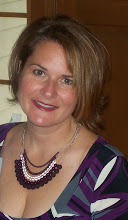 Stephanie Elliot has been married for 20 years and lives in Scottsdale, AZ. She has three children and is a freelance editor for a variety of parenting websites. She is also the owner of Booking with Manic, a popular book blog, where she has hosted hundreds of authors and given away hundreds of books over the years. She is the author of What She Left Us and the e-novella, The Cell Phone Lot. The Life After will be published September 2013.
Stephanie Elliot has been married for 20 years and lives in Scottsdale, AZ. She has three children and is a freelance editor for a variety of parenting websites. She is also the owner of Booking with Manic, a popular book blog, where she has hosted hundreds of authors and given away hundreds of books over the years. She is the author of What She Left Us and the e-novella, The Cell Phone Lot. The Life After will be published September 2013.
What She Left Us is available on Amazon.


August 22, 2013
Author Jess Riley Masters Writing The Story That Demands To Be Written
Many writers not only read widely, but write widely. In my tenure as a fiction writer I’ve dabbled in short stories that use different voices and points of view. I see them as experiments at first, yet some have become my favorite work.
Author Jess Riley shares with us how she stepped out of the realm of traditional women’s fiction and how it’s her favorite book to date. Jess has been both traditionally and self-published. I don’t know if Jess knows this but I remember her from Backspace when her first novel was published. It feels good to be in on her career all along the way!
Please welcome Jess Riley to Women’s Fiction Writers!
Amy xo
Author Jess Riley Masters Writing The Story That Demands To Be Written
A thank you card from my students who were in prison.
 I cut my teeth in women’s fiction, with my debut novel DRIVING SIDEWAYS (2008) and my second, ALL THE LONELY PEOPLE (2012), both written from the point-of-view of a female protagonist and focused on friendships, romantic relationships, and the struggle to find both redemption and a rewarding place in the world. And while women’s fiction (especially an edgier, darker variety of “chick lit”) is the primary genre I like to read and write, I also dabble in its masculine counterpart, “lad lit” … also known as “dude lit,” “dick lit,” or simply “literary fiction.” (I’m being a little eye-rolling and tongue-in-cheek now … more on that later.)
I cut my teeth in women’s fiction, with my debut novel DRIVING SIDEWAYS (2008) and my second, ALL THE LONELY PEOPLE (2012), both written from the point-of-view of a female protagonist and focused on friendships, romantic relationships, and the struggle to find both redemption and a rewarding place in the world. And while women’s fiction (especially an edgier, darker variety of “chick lit”) is the primary genre I like to read and write, I also dabble in its masculine counterpart, “lad lit” … also known as “dude lit,” “dick lit,” or simply “literary fiction.” (I’m being a little eye-rolling and tongue-in-cheek now … more on that later.)
First, some backstory. To make ends meet in college, I worked part-time as a teacher in a medium-security men’s prison. This sounds strange for any young woman, but at the time, I was so shy I could barely make a phone call without a script. But my parents met in prison (that’s the running gag, which I included in the dedication of my new novel—they actually worked there together), so it didn’t seem entirely abnormal to me. It turned out to be a life-changing job, and my experiences were a gold mine for any writer.
Years later, I decided to integrate those experiences into a novel: MANDATORY RELEASE. I developed two protagonists, and I wanted them to tell their stories in an alternating chapter format. However, given the subject matter, setting, and the kind of story I wanted to tell, I was drifting farther and farther from the women’s fiction camp. The more I wrote, the more I felt I was entering Nick Hornby territory: the novel was darker and snarkier, tackling some uncomfortable subjects in an unconventional setting.* Oh, and I was writing from a first-person/present POV for my male character, and third-person/past for my female character. I have no idea how that happened, but you write the story the way it demands to be written, and that’s how it came to me, fast and furious.
Not only was my primary “voice” a man, but he was also in a wheelchair, which required extensive research and added layers of bitter, heartbreaking, and sometimes hilariously honest complication to the unfolding love story. The funny thing is that he was incredibly easy to write, because my own sensibilities, humor, and interests lined up with his raw take on life. In a way, I neutered him with a spinal cord injury, which one could argue made him both easier to write and sympathize with, but he’s still a guy, with a more masculine outlook on life.
Tell me if you agree with this statement: The snarkier, funnier, and angrier your protagonist, the easier that character is to accept if he’s a man. Likeability and familiarity are important in commercial women’s fiction; I knew I was in trouble the more honest and real I was getting with how my characters thought and spoke, and holy cow: the setting? I love that Orange is the New Black is big now, because I got lots of crooked looks when I tried to explain what a strangely fabulous setting a prison can be for a story.
This is getting long, so it’s time to bottom-line it. This novel was the most difficult story I’ve written, but it’s my favorite. It’s also my agent’s favorite, my freelance editor’s favorite, and many of my readers’ favorite, judging by the reviews. However, it’s also the toughest sell. A bestselling author friend of mine actually wrote me to say (and I quote), “This is some straight-up Tom Perotta/Jonathan Tropper business and it’s making me crazy that it’s not being marketed by a major publisher, put on the front table everywhere … is there any chance you and your agent could hatch a scheme … as in market MR as having been written by a guy? Like, assume a pen name? I mean, there’s such a bias against female writers; why not make the misogyny work FOR you?”
Well, I think that ship has sailed, but if I bend genres again, I may consider a pseudonym. (Jen Weiner, who is pretty much the queen of women’s fiction and all kinds of amazing, has lots to say on that subject.) I hate the word “branding,” but it is important if you want to keep selling novels to traditional publishers, especially today. However, I wrote what I wanted to write with MANDATORY RELEASE, and I wouldn’t trade that feeling, that experience, for anything; however, I would warn aspiring authors to be careful if you mix it up too early in your career. Have fun, but keep readers’ expectations in mind. And when you write what you want to write, don’t forget that the formula is: rewards for the reader (humor, rich language, relatable and developed characters, plot twists, etc.) – self-indulgent writing = a satisfying book. One you can be truly proud of, even if you release it yourself.
*(I did an interview with OnMilwaukee recently, and one of the reporter’s questions cracked me up: “This novel was laugh-out-loud funny, but also deeply profound. How, as a writer, did you combine the levity and humor with the backdrop of a prison, along with storylines that included paralysis, pedophilia and even murder?” I saw that and said to my husband, “Now that’s going to sell some books!”)
 Jess Riley’s teaching experiences in a prison inspired her latest novel, MANDATORY RELEASE. Her debut novel was DRIVING SIDEWAYS, a Target bestseller now in its fourth printing, published by Random House in 2008. She is also the author of ALL THE LONELY PEOPLE (2012) and the novella CLOSER THAN THEY APPEAR. She lives in Oshkosh, Wisconsin with her husband and a nutty Cairn Terrier who despises the theme music to certain public radio shows. Follow Jess on Twitter (@jessrileywrites), Facebook (www.facebook.com/JessRileyAuthor), or her blog (www.jessriley.com).
Jess Riley’s teaching experiences in a prison inspired her latest novel, MANDATORY RELEASE. Her debut novel was DRIVING SIDEWAYS, a Target bestseller now in its fourth printing, published by Random House in 2008. She is also the author of ALL THE LONELY PEOPLE (2012) and the novella CLOSER THAN THEY APPEAR. She lives in Oshkosh, Wisconsin with her husband and a nutty Cairn Terrier who despises the theme music to certain public radio shows. Follow Jess on Twitter (@jessrileywrites), Facebook (www.facebook.com/JessRileyAuthor), or her blog (www.jessriley.com).


August 20, 2013
Author Of 9 Women’s Fiction Books, Beth Kendrick Says: “Be Patient With Yourself And With The Process”
Author Beth Kendrick has written nine women’s fiction books. NINE! And now she’s sharing some of her thoughts, inspirations, and advice with all of us at Women’s Fiction Writers. I think what I’ve learned most from Beth is that we all have our own path. What works so incredibly well for Beth, might not work for me or for you. But the key is to give yourself the time and attention to find what works for you, allow yourself to mess up and start again, to find ideas in unusual places, and to let your stories flow. You can always fix ‘em later!
Please welcome Beth Kendrick to Women’s Fiction Writers!
Amy xo
Author Of 9 Women’s Fiction Books, Beth Kendrick Says: “Be Patient With Yourself And With The Process”
 Amy: Did I count correctly? Is THE WEEK BEFORE THE WEDDING lucky number thirteen? Is this the thirteenth time you’ve written a novel or been included in an anthology? Can you tell us what your writing and publishing journey has been like?
Amy: Did I count correctly? Is THE WEEK BEFORE THE WEDDING lucky number thirteen? Is this the thirteenth time you’ve written a novel or been included in an anthology? Can you tell us what your writing and publishing journey has been like?
Beth: Not unlike Space Mountain at Disneyland—there’ve been a lot of sudden twists and turns, thrilling adrenaline rushes, and heart-stopping drops. Oh, and don’t forget the occasional urge to vomit into the wastebasket.
I started writing novels when I was 22 years old via a fiction course at the UCLA extension school. I was in a doctoral program for psychology at the time, and writing was supposed to be a fun little hobby. Yeah, whoops.
Because I’m insane, I finished a draft of my first women’s fiction book, managed to land an agent, and sold to Simon & Schuster while simultaneously working on my dissertation. (I had a lot more energy when I was 22.) I kept swearing that I would write “just one more” novel and then get back to a real job. Thirteen books later, here I am—a lifer and loving it.
Amy: You obviously know what you’re doing. As someone who’s writing her second novel, and in honor of all the aspiring novelists who read this blog: HOW DO YOU DO IT? Do you have a schedule? Outlines? Good luck charm? If there is one or two things you consider essential for your success, what are they?
Beth: How do I do it? Girl, I ask myself that same question every day.
My “process” is a hot mess. I brainstorm plot points and bits of dialogue on index cards and notebooks, but I don’t do a lot of formal outlining or character descriptions. Have you seen “A Beautiful Mind” with Russell Crowe? Remember the scene where the professor’s wife discovers his secret backyard office/lair, with stacks of paper and torn-out newspaper articles and incomprehensible scribbles covering every available surface? Yeah, that’s what my home office looks like. Except there are also a pair of lazy red dogs sitting sentry under the desk and barking at the garbage truck.
A few years ago, I started write scenes out of sequence (I’ll work on whatever dramatic moment I’m feeling most enthusiastic about that day.) ***Word of advice to aspiring authors: NEVER DO THIS.*** My first drafts are crime scenes. Subplots and crises and secondary characters splattered all over. Before I can revise, I have to sort through the scenes, re-order everything, take out all the extraneous nonsense, and fill in the gaping holes. I call it “working the Rubik’s cube”, and again, you should NEVER DO THIS. Once I tried this method, I couldn’t stop, but seriously, save yourself before it’s too late.
Amy: Tell us a little about A WEEK BEFORE THE WEDDING. My best ideas hit me when I’m in the shower or when I’m driving (or anywhere I can’t write them down.) Where were you when the idea sparked?
Beth: Well, here’s the blurb from the back of the book:
After enduring a chaotic childhood, Emily McKellips yearns for a drama-free life, complete with a white picket fence. Her dreams are about to come true: She has a stellar career, a gorgeous house, and a fiancé any woman would die for. But as friends and family arrive in picturesque Valentine, Vermont, for her wedding, an uninvited guest shows up.
Ryan is Emily’s first husband from a disastrous starter marriage. They wed on a whim, only to discover that combustible chemistry couldn’t ensure a happily ever after. But Ryan is no longer the headstrong boy she left behind. He’s now a successful film producer who just happens to be scouting a resort in Valentine with his adorable retriever in tow.
As the bridesmaids revolt and the mothers of the bride and groom do battle, Emily is surprised to discover new sides of both her ex and her fiancé. She thought she had life and love all figured out, but the next seven days might change her mind—and her heart.
Or, as I like to describe it, “Sweet Home Alabama” meets “Dirty Dancing” meets your little dog, too. There’s a lot that I love about this book—a vintage wedding gown from the 50’s, a mischievous golden retriever, a hero who is hot like fire–but the driving force behind the story is friendship and sisterhood.
Before I started my first draft, I browsed online and found a gorgeous Priscilla of Boston wedding dress that ignited my creative spark:
Amy: Women’s fiction is often character-driven fiction. What do you keep in mind when creating your main or most important characters? What do you try to avoid writing or doing?
Beth: I try to create characters I’d like to have drinks with, which means they are funny, honest and deeply flawed. And once I breathe life into them, I do my best to get out of the way, let them mix it up, and make some really bad decisions. I used to try to protect my protagonists, to shield them from the fall-out of their mistakes, and one of my critique partners called me on it. She said, “You have to let bad things happen to your characters. Really bad things. Horrible things.” And it’s true. Now my motto is: if you’re going to plunge in the knife, you might as well twist it. When one of my characters gets into trouble, I’m always thinking, “How can I make this situation even worse?” Totally sick…but also kind of fun.
I try to avoid overanalyzing characters in advance. As I mentioned earlier, I don’t do extensive pre-writing and I like it when characters take charge and surprise me. It feels fresh and spontaneous, and that comes across to the readers.
Amy: How do you define women’s fiction—and does the label bother you? (As you might have guessed from my blog title, it doesn’t bother me.)
Beth: As long as readers enjoy my books, I don’t care what kind of labels the booksellers or publishers use.
Amy: What’s your best advice for aspiring authors of women’s fiction?
Beth: Besides “don’t write scenes out of sequence”? Be patient, both with yourself and with the process. Find a network of other writers who are at the same stage in the process (e.g., just starting to write, knee-deep in a first draft, querying agents, etc.) Writing can be so solitary and isolating, and it’s crucial to have writer buddies who will support you, who will celebrate and commiserate with you and hold your hair back when you’re throwing up into the wastebasket after Space Mountain. Enjoy the ride!
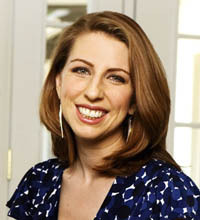 Beth Kendrick lives in Arizona with her trusty rescue dogs, Roxie Hart and Friday. She is the author of nine women’s fiction books, including Week Before the Wedding and Nearlyweds, which was made into a Hallmark Channel movie.
Beth Kendrick lives in Arizona with her trusty rescue dogs, Roxie Hart and Friday. She is the author of nine women’s fiction books, including Week Before the Wedding and Nearlyweds, which was made into a Hallmark Channel movie.
Website: http://www.BethKendrick.com
Facebook: http://www.facebook.com/BethKendrickBooks
Twitter: @BKendrickBooks


August 14, 2013
Author Rosemary O’Brien Says No Matter What Else Is True, It All Rests On Good Writing
So many writers, so many books, so many opinions! Today, author Rosemary O’Brien explains her choice to go with a mid-market publisher and to embark on a non-fiction publishing project of her own. She likes to write what she knows, while I like to write what I want to know. Rosemary, like many authors, doesn’t like the women’s fiction label. As you know, I embrace it. No matter the differences there, I agree with Rosemary that reinvention is key, that you have to keep trying, and that it all rests on good writing!
Let us know what YOU think! And p lease welcome Rosemary O’Brien to Women’s Fiction Writers!
Amy xo
Author Rosemary O’Brien Says No Matter What Else Is True, It All Rests On Good Writing
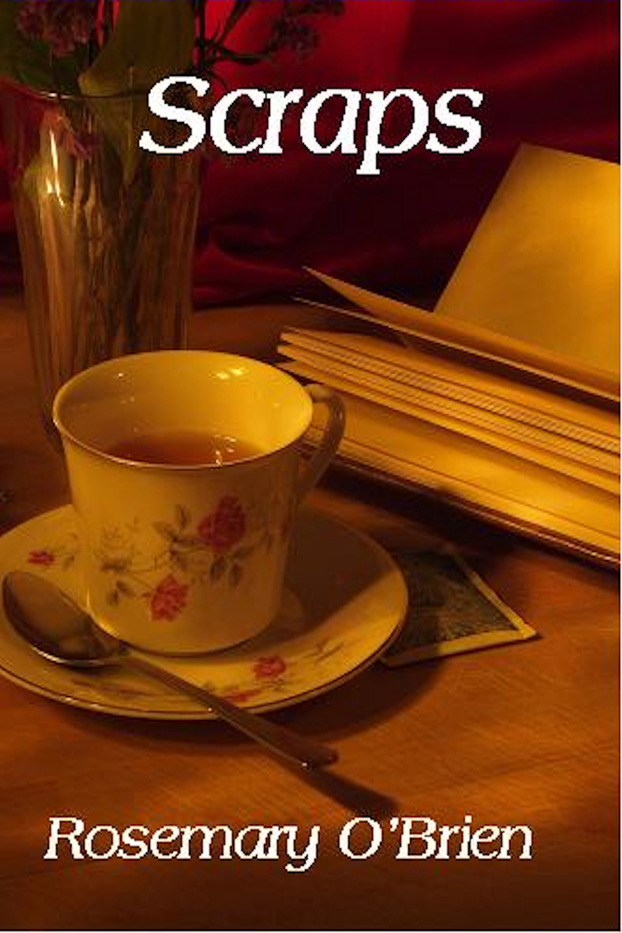 Amy: Sometimes writers start with one idea and end up with another. Did this end up being the story you initially intended to write and what sparked the idea in the first place?
Amy: Sometimes writers start with one idea and end up with another. Did this end up being the story you initially intended to write and what sparked the idea in the first place?
Rosemary: The idea was sparked some years ago while attending a scrapbooking weekend. I looked around at the over 300 attendees and knew I could write about these people. The organizer let out that I was an author, too, so when they came to my table to ask me about my book, many women suggested I write about someone who scrapbooked as one of my characters. The story about the family scrapbook came up while I was brainstorming story lines.
I didn’t like the first draft and was sidelined for a few years after the birth of my second son. During this time, I kept writing for magazines and websites, but kept thinking about why I didn’t like the story. I can’t even remember what I didn’t like, but when I figured it out, I went back and finished the book.
Amy: How did you find your publisher? (Or how did your publisher find you?) What do you think are the benefits of working with a mid-market publisher? And what does that mean?
Rosemary: I was actually looking for an agent. I think it’s best to continue on to your next book while an agent searches for the best publisher and works out the deal. They know who is looking for what, so it behooves you to rely on their experience. With that said, agents often look for blockbusters and mine was just a simple story about a family and a scrapbook. So while I garnered rejections from agents, I kept my eyes open for small publishers who might take me on. I found Solstice through one of the various newsletters I receive and figured I would send them the manuscript. They liked it and signed me.
Mid-market or small publishers take chances on smaller name authors, like me. They are looking for good stories, not the blockbusters necessarily. The benefit is that you’re more likely to be signed by one of these publishers. The drawback is that they don’t put a lot of marketing dollars behind their authors, so you have to do more of the marketing and getting the word out than if you had a marketing department behind you. Regardless of whether your publisher is large or small, the work has to be good work or you won’t sign with anyone. It all rests on good writing at the outset.
Amy: Trends abound on women’s fiction book covers. SCRAPS has a photograph of a teacup on the cover. THE GLASS WIVES has two teacups. I could wallpaper a room with book covers with tea cups. What’s your opinion on the tea cup trend? Why are they popular? Certainly not everyone in every book sits around drinking tea!
Rosemary: LOL I actually created that cover after rejecting several of the publisher’s covers. This is another benefit of working with a small publisher. They are accessible. I really did not like the covers the cover artist sent me, asked for changes, did not like the changes, and finally said, “I could design a better cover!” When I got to that point, I emailed the publisher and asked if I could try at the same time I submitted a couple of my suggestions.
As for the tea cup, I was looking for a coffee cup, but could not find a good image. I wanted a coffee cup and an open scrapbook. I liked the warm colors, too. I felt they fit the story. As for the trend, I guess I tuned in to the collective conciousness or something! I just know if I’m looking at a scrapbook, I grab my coffee before sitting down and flipping through the pages.
Amy: Publishing is changing. Sometimes writing careers are unpredictable, but that doesn’t mean writers don’t plan. What are your plans for your future as an author?
Rosemary: I also said I wanted to be more than a one book wonder. Now that my second novel is out, I find I want to be more than a two book wonder! My current project is actually a niche publishing company. I am writing a book about vest pocket parks* in New York City with plans to write books for other cities with promising public spaces. (*mini parks)
As a writer, I’ve had to reinvent myself a few times. First, my freelance writing markets started drying up due to the economy and the advent of online writing. Online magazines and newsletters pay very little, but that’s what was available for freelancers after the relative demise of print jobs. I started specializing in health writing and writing for consumers. When I began this pocket parks project, it was originally going to be one book about the city I loved. After attending an entrepreneurial program for military families and veterans, EBV-F, I discovered my one book could actually be an entire niche publishing company. This would give me more control and potentially more income than if I wrote one book and signed it off to a publisher or taking many smaller writing gigs I had been taking over the years.
Amy: How would you define women’s fiction?
Rosemary: I don’t like the term ‘women’s fiction.’ Women’s fiction brings to mind sappy romances, in my opinion. There’s nothing wrong with sappy romances, but not just women read them. I let my novels be called women’s fiction because the stories are about women and their lives and it’s easier for buyers to categorize a novel if its subject is defined. ‘Fiction’ doesn’t mean anything, but ‘women’s fiction’ or ‘science fiction’ means something to the buyers. There’s a shelf for those titles. I have had several men read and enjoy my books, especially ‘First Saturday,’ so perhaps women’s fiction would be better defined as I said, stories about women and their lives.
Amy: What’s your best advice for aspiring authors of women’s fiction?
Rosemary: My advice is to keep writing, but also keep learning about writing and the market. Truth be told I had the story in my head, but I was also looking for a story that would be relatable to as many readers as possible. With all of those scrapbookers sitting in the same room with me, many of them readers of fiction, and knowing this event planning group did many of these scrapbooking retreats, I knew I had an idea worth writing about. When I went back to my community at the time which was filled with first-generation Americans of Italian ancestry, I asked them if they would read a book with an Italian-American storyline. The consensus was that they would love to read about families like theirs, so I knew I had something.
Yes, writing fiction is an art and a craft, but you do not want to write a book no one is going to read, do you? I suggest following the first rule of writing fiction which is, “Write what you know.” I would also add a second rule: “Write what people will read.”
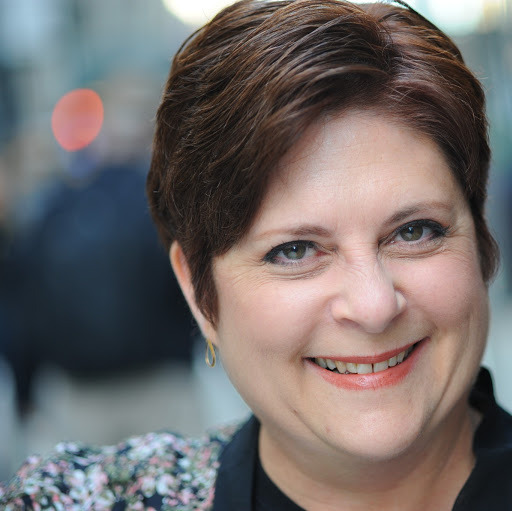 Rosemary O’Brien has been writing professionally for over 15 years, her first career was as an actress in musical theatre. She lives in Southern Connecticut and loves to write about her hometown of West Haven, Connecticut. FIRST SATURDAY was originally published in 2002 and earned her a loyal readership. O’Brien is especially proud of all of the cancer survivors who told her she just “gets it.”
Rosemary O’Brien has been writing professionally for over 15 years, her first career was as an actress in musical theatre. She lives in Southern Connecticut and loves to write about her hometown of West Haven, Connecticut. FIRST SATURDAY was originally published in 2002 and earned her a loyal readership. O’Brien is especially proud of all of the cancer survivors who told her she just “gets it.”
Rosemary is currently working on a book about pocket parks in New York City. Read more about her latest project at http://www.PocketParksNYC.com or about her other work at http://www.RosemaryOBrien.net.


August 13, 2013
Guest Post: Author Carolyn Turgeon Shares Her Novel-Writing Mistakes So You Can Avoid Them
As writers we sometimes wish for the secret sauce—that ingredient that will make our careers, our writing, our books, different from the rest, memorable, popular. And while there is no way to know all the answers, the best part of being a member of the writing community is that writers are generous souls. We share. We want everyone else to work hard but we don’t want anyone to suffer needlessly. And that’s where Carolyn Turgeon steps in! Today she shares her own novel-writing mistakes with the Women’s Fiction Writers community so that we can think, change course, even swerve to get out of their way on our own journey.
I happened upon Carolyn’s novel GODMOTHER years ago and fell in love with it. Told everyone I knew about it. It remains one of my favorite books. I know many of my friends read it and it ended up a book club selection for several area book clubs! Perhaps that was the real precursor to this blog and sharing my love of books and authors.
Now Carolyn is celebrating the publication of her FIFTH novel, THE FAIREST OF THEM ALL, which is perched at the top of the TBR pile on my nightstand.
Please welcome Carolyn Turgeon to Women’s Fiction Writers!
Amy xo
TRAGIC NOVEL-WRITING MISTAKES
by Carolyn Turgeon
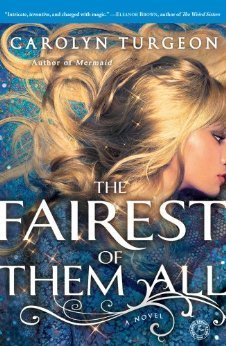 My latest novel. The Fairest of Them All (the story of how Rapunzel grew up to become Snow White’s stepmother), came out August 6th from Simon & Schuster. The whole process was fairly quick, for a novel: I sold the book in November 2011 with one chapter and a synopsis, I turned in a first draft in May 2012, my editor responded and I went back to do extensive revisions, and the whole thing was wrapped up by November or so. The process was not without pain and trauma (it was writing, after all!) but it went fairly smoothly, as these things go.
My latest novel. The Fairest of Them All (the story of how Rapunzel grew up to become Snow White’s stepmother), came out August 6th from Simon & Schuster. The whole process was fairly quick, for a novel: I sold the book in November 2011 with one chapter and a synopsis, I turned in a first draft in May 2012, my editor responded and I went back to do extensive revisions, and the whole thing was wrapped up by November or so. The process was not without pain and trauma (it was writing, after all!) but it went fairly smoothly, as these things go.
Fairest is my fifth novel. I wish I could say that I’ve always written in an efficient and semi-timely manner, but that would be far from the truth. My first novel took ten years to write, off and on, and I made all kinds of mistakes. Really, I did everything wrong. But I have managed to narrow all that wrong-ness down into the following list, which I hope might serve some purpose for those looking to avoid such a tragic fate.
I really thought that writing a novel was impossible. It seemed like such a momentous and magical task to me that I didn’t actually think I could do it, and so I didn’t act the way someone would act if they thought that completing a novel was just a matter of sitting down and doing it, line by line, day by day. Which it is.
I didn’t join a workshop or take a class or do any of those things. I was confident in my writing and didn’t think I needed it, for one (which was wrong), but I also didn’t realize how important it is to be part of a community of writers, and to have other people in the world have a stake in your writing, and you in theirs. It is.
I thought I had to write my book in order. I don’t know why I thought that, but I did. So if I got stuck somewhere and wasn’t sure what to do next, I just didn’t write again for months and months. And months.
It didn’t help that I hadn’t made any space for a novel in my life. Mental space, that is. I started my first novel in college (or at least I wrote an incomplete short story that I knew needed to be some kind of novel) and set it aside, and then I went off to a PhD program in Comparative Literature thinking I’d write my novel in my spare time. But the PhD work was all-consuming, it’s what I thought about in the shower and during walks, etc., and those are the spaces you need for your novel. I did, at least. Eventually, three years in, I realized I’d never write a novel if I continued on my current path and I left school and got a regular job.
Another reason I kept getting stuck was because I didn’t know what I was writing. I had some characters I loved, a setting and a mood, bits of stories and images, pretty language… but a novel? You really need a big story, and some conflict, and some motivations that will make this gorgeous thing called an arc that will carry your reader—breathlessly, you hope—to some kind of satisfying end. I didn’t have those things. Now I know to figure out the story first (while leaving plenty of room for improvising) and to write with blueprint in hand.
I also didn’t write in scene. It was only after I finished a draft and got a top agent and started getting rejections that called my book “too quiet” that I realized that something was wrong. To concentrate on book two (which was really hard with book one circulating with editors), I actually joined a workshop in NYC with author Jennifer Belle, who pointed out almost immediately that I didn’t write in scenes. I had long, long pretty passages in summary, but no moment-by-moment you-feel-like-you’re-right-there set-in-a-specific-time-and-place scenes. The minute I broke everything down into moments, my writing came alive in a way it never had before. I ended taking my first book back from my agent and redoing it from beginning to end.
I guess the one thing I did have going for me was the crazy faith and bull-headedness to actually keep coming back to that book, over those long ten years, and then to rewrite it from beginning to end when I realized I could make it better and more alive. I’ve watched a whole lot of writers not get very far because they don’t have that faith and tenacity, which is, when it comes down to it, more important than anything. Without it, I’d have a bunch of scattered pretty pages and a whole lot of potential, like so many other aspiring writers do. What I think now is: nurture that faith however you can. Trick yourself into having it, if you must. Do whatever it takes to get yourself to sit in that chair. Think of your novel as a series of moments, and tackle them one by one.
So please do not make these mistakes. I know there are plenty of other mistakes you can make, and I would advise you not to make those, either. You’re welcome.
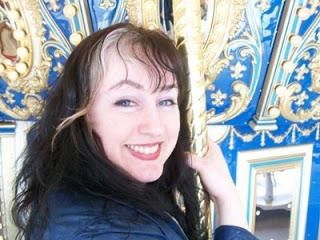 Carolyn Turgeon is the author of Rain Village, Godmother: The Secret Cinderella Story, Mermaid: A Twist on the Classic Tale, and the young adult novel The Next Full Moon. She is the editor of Mermaids, a special-edition annual magazine, and teaches writing in the low-residency MFA program at the University of Alaska at Anchorage.
Carolyn Turgeon is the author of Rain Village, Godmother: The Secret Cinderella Story, Mermaid: A Twist on the Classic Tale, and the young adult novel The Next Full Moon. She is the editor of Mermaids, a special-edition annual magazine, and teaches writing in the low-residency MFA program at the University of Alaska at Anchorage.
Find out more at CarolynTurgeon.com and IAmaMermaid.com.


August 7, 2013
Author Renee Swindle Says Discover What You’re Good At Writing, And Write It!
Renee Swindle is kind, intuitive, thoughtful, and funny—and her novel, Shake Down The Stars, has all those same qualities. When I read an early copy of Shake Down The Stars I did so in two days and fell in love with the characters and story (which you’ll learn about below)! Renee has captured the humor and depth of an American family with its quirks and hardships and real love at its core. The writing is engaging and the prose heartfelt and honest. The story carries you along but makes you think. Below, Renee talks about having her second novel published more than a decade after the first, connecting with an editor who found her story universal, and how writers should remember to be themselves while they’re writing.
Please welcome my dear friend, Renee Swindle, to Women’s Fiction Writers. (And tell her to come to Chicago to sign my new paperback copy of Shake Down The Stars!)
Amy xo

My copy arrived on Tuesday! I love the colors on the real book!
Author Renee Swindle Says Discover What You’re Good At Writing, And Write It!
 Amy: I’ve been waiting and waiting to share Shake Down The Stars with WFW readers! Can you tell us a little bit about the story—and how the idea sparked?
Amy: I’ve been waiting and waiting to share Shake Down The Stars with WFW readers! Can you tell us a little bit about the story—and how the idea sparked?
Renee: Thanks so much for having me, Amy. For those who don’t know her personally, Amy is as nice and supportive as you’d imagine. I feel lucky to be here! Okay. How to explain my novel in a few short words? Piper, the protagonist of Shake Down The Stars, is trying to overcome a tragic loss but doing so by spending an unhealthy amount of time with her ex-husband. She also drinks too much and seeks out the company of unsuitable men. Basically, she’s trying to anesthetize herself in any way she can against the blow she suffered years before when a car accident took the life of her daughter. Her family is of no help at all. Her mother is married to a celebrity evangelist and only advises her to pray; and her sister has no time for her, or anyone, because she’s planning a wedding to a famous football player. While certain events in Piper’s life are heartbreaking, the novel is also uplifting, and sometimes even comedic, thanks to the friendships she makes along the way. Ultimately Piper learns that she can work through her loss and pain with the help of others.
Amy: Shake Down The Stars is your second novel. You’re a multi-published author! What’s the biggest difference between then and now in publishing? And what’s the biggest difference between your first and second novels?
Renee: Wow. How much time do you have?! My first novel Please Please Please came out in 1999, which seems so long ago I hardly feel like a multi-published author. I’m not sure many will remember, but back then things like texting and Facebook didn’t exist—was Zuckerberg even born in ’99?! Anyway, I guess you could say that those were the heady days of publishing. I was sent on an eight-city tour that included fancy hotels and car service! Today, though, it seems much more about the bottom line. In the past, publishers were willing to take more risks and willing to work with authors more. I also think that unless you’re a sure bet, you might not expect a big publicity campaign. Today you do what you can to promote your book by using social media as much as possible and promoting yourself locally—at least that’s what I’m doing. And I hope I don’t sound like a downer. I knew it was harder to get published in today’s market, but instead of giving up, I took it as a challenge to write the best novel I could so that an editor might be interested in publishing it.
As for the second part of your question, my first novel was based on a short story I wrote while in grad school. The narrator was duplicitous and unreliable, but I also thought she could be pretty funny—and sexy. I’m still interested in characters I don’t see much and characters that surprise me. I actually wrote two novels after Please Please Please (which explains the delay between books) but they never sold or went anywhere—except a drawer! I think I needed to find my own voice, which lead to Shake Down The Stars. Writing the two books that went nowhere helped me to see that my ability lies in humor and telling a fast-paced narrative—at least I hope so—even if the story is sometimes dark or sad.
Amy: One of the elements of SHAKE DOWN THE STARS that I loved is that is the story and characters are universal and relatable. There’s a cultural tinge, and I that reminded me of my own novel. I think you know that there were some naysayers with my book, who said that only Jewish readers would enjoy or understand the story. Did you experience anything like that with this novel? Did anyone say only Black readers would read and enjoy SHAKE DOWN THE STARS? (If they did, they are WRONG!)
Renee: Thanks, Amy. I think, sadly, the publishing industry can still be very segregated in certain respects. If your narrator is African American, or Jewish, or fill in the blank, many believe the book should be marketed as such. Can I bring back the word hogwash? When I read Jumpha Lahiri or Sandra Cisneros or even when I read The Glass Wives, sure, some food or ritual might be mentioned that I’ll have to look up, or there’ll be some other distinct cultural reference, but the stories—the human stories—are universal. That’s why we read, no? At any rate, I consider myself very lucky that Shake Down The Stars, went to Ellen Edwards at NAL/Penguin, she believed the novel would appeal to all women and said right off the bat that it would be categorized as women’s fiction. Please Please Please was marketed as solely African American fiction so I was ecstatic to hear she thought Shake Down The Stars was a book for everyone-because it is! I’ve always thought of myself as a writer who wants a broad audience so that she said that was just great.
Amy: What’s your favorite scene or part of SHAKE DOWN THE STARS? What makes it your favorite?
Renee: I like the opening scene for personal reasons. During an early draft, Piper, the narrator, was attending a party but hiding out in a room all by herself. Boring! I tried to write the scene a couple of more times with Piper’s sister walking into the room, but it wasn’t taking off. After the third try a guy named Selwyn walked inside, he was short and funny and odd. He and Piper could really riff off of each other and the novel took off from there.
Amy: What do you find is the hardest part of being a novelist? (Aside from fitting it in with all the other things you do!)
Renee: Great question, Amy. I think the hardest part for me is the lack of control. Once my novel comes out all I can really do is hope that readers find it, like it, and tell a friend. In so many ways the success or failure is out of my hands. I suppose it’s like watching your kid go off to college. You do your best, but then you have to trust that your child will find her way. As much as I’d like to walk into the bookstore and force people to read my novel, I have to trust that readers will find it.
Amy: How do you define women’s fiction? And what are your thoughts on that label?
Renee: I’m not the biggest fan of labeling books. I hate that African American Fiction, or so-called gay fiction, say, is often cut off from other books in the bookstore. That said, I love being part of the women’s fiction community because I love so-called women’s fiction. I read a wide variety of books, but there’s something about discovering how other women live their lives and overcome their struggles that allows me to completely disappear inside the story.
For the most part you know the heroine will grow and often triumph. I enjoy that and love that my novels are classified under the category of women’s fiction. Yes, I know I’m contradicting myself (smile), but I’m trying to be honest here.
Amy: What’s your best advice for aspiring authors (and frustrated authors) of women’s fiction?
Renee: Be yourself. Write the story you want to tell and not the story you think you should tell. Do your best to discover what you’re good at and run with it. In the meantime, continue to hone the weaker aspects of your writing. Read a ton. As you read, watch how writers set up scenes and use dialogue and all the rest. Finally, find a way to make the process of sitting and facing your fears every day enjoyable. I know that sounds nuts, but it’s such a long haul, the sooner you learn to become your own cheerleader and best friend, the better.
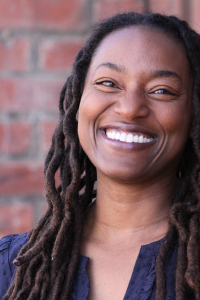 Renee Swindle is the author of Shake Down The Stars, published August 6th, 2013 by NAL/Penguin.
Renee Swindle is the author of Shake Down The Stars, published August 6th, 2013 by NAL/Penguin.
Renee’s first novel, Please Please Please, was published by the Dial Press/Dell. Please Please Please was also published in Germany as Mehr Mehr Mehr and published in Japan. Please Please Please was an Essence Magazine bestseller.
Renee Swindle earned her BA from UC Irvine and MFA in creative writing from San Diego State University. She lives in Oakland, California with her two dogs and three cats–meow!
Find out more about Renee and her books on her website. You can follow her on Twitter @Renee_Swindle and find her on Facebook too!


August 5, 2013
Debut Historical Fiction Author Jessica Brockmole Isn’t Limited By Labels
I confess. I LOVE historical epistolary novels. I have had a lifelong obsession with letter writing (I’ve had a pen pal overseas since I was nine). I love to experience a story unfolding through documents and correspondence. It also seems like one of the most creative ways to bring history to life. I’m in awe of historical fiction authors. Research for my novels consists of interviews, reading articles, and Google searches. Ooh, and Google Earth. I definitely can’t imagine pouring over documents and books, remembering dates and facts and names and places. Let alone putting it all into letters.
And that’s what we have with LETTERS FROM SKYE by Jessica Brockmole.
Jessica’s got not only a great book but a great attitude and heartfelt, on-target advice for other writers.
Please welcome Jessica Brockmole to Women’s Fiction Writers!
Amy xo
Debut Historical Fiction Author Jessica Brockmole Isn’t Limited By Labels
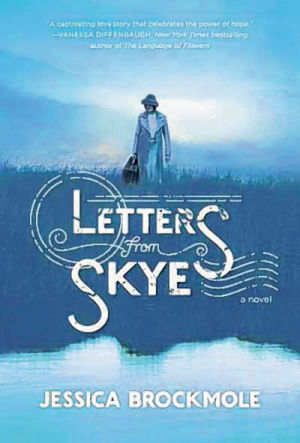 Amy: Letters From Skye is an epistolary novel. I have to admit, I LOVE novels in letters. Maybe it’s because I’ve had a pen pal overseas since I was nine and just love letter writing in general and have a novel based on our friendship tucked into my “one-day” mental filing cabinet. Do you have a pen pal? If not, what prompted Letters From Skye? And can you tell us a bit about the story?
Amy: Letters From Skye is an epistolary novel. I have to admit, I LOVE novels in letters. Maybe it’s because I’ve had a pen pal overseas since I was nine and just love letter writing in general and have a novel based on our friendship tucked into my “one-day” mental filing cabinet. Do you have a pen pal? If not, what prompted Letters From Skye? And can you tell us a bit about the story?
Jessica: How wonderful that you’ve had a pen pal for all of those years! Around the time that I wrote Letters from Skye, I had just moved to Scotland. Suddenly I was an ocean and several time zones apart from friends and family. We could no longer pick up the phone just to say hi. Many of my relationships changed as we, of necessity, had to begin writing. I found this fascinating, how relationships could be held together with nothing but words, and I wanted to explore this in a book.
In Letters from Skye, an American college student impulsively sends a fan letter to a reclusive Scottish poet in 1912. Intrigued, she replies. Their exchange blossoms into a friendship and, as World War One begins, a tentative love. A generation and another war later, the poet’s daughter discovers a hidden cache of letters in her Edinburgh flat, letters that seem to mirror her own warming relationship with her best friend in the RAF. With her discovery, she sets off to piece together the story of her mother’s, and her own, past.
Amy: Historical novels require a lot of research. Do you have a background in research or this era? Or did you just become a research junkie for the book?
Jessica: I don’t have a background in history, but I come from a family very interested in it. I grew up in museums and archives and living history sites, breathing in the littlest details about life way back when. So, although I have no formal training in historical research, I came into historical fiction with a healthy respect for accuracy and for learning through primary sources and artifacts.
Amy: As a writer of contemporary fiction who loves reading historical fiction, I’m always impressed and baffled. How to organize and use your research to fuel and inform your fiction?
Jessica: Organize? Oh, goodness, that sounds like work!
When I first began to write historical fiction (a ponderous novel that is now, thankfully, trunked), I was extremely organized. I spent a good long time researching before I wrote the first word, and I kept all of that arranged in detailed pages of notes collated into a series of folders, prefaced by an annotated bibliography. I meant business.
I learned, though, that this didn’t work for me. Researching in this manner actually bogged me down. I had the facts, in excess, but not the story to support them. I began to experiment with other methods of writing and researching and discovered that I work best when I don’t plan so much out. I write and, as I get to know my story, I research. Both are so much more free-form than what I used to do before.
I’ve also learned that I have a good memory for what I read and where I’ve read it. I do print out and highlight articles, and I do tab pages and underline in books, but I no longer take pages of notes. I bring those facts right away into my writing and, if I need them again later, can generally put my finger on them quickly.
Amy: Are you an outliner (I always think historical novelists must be)? Do you have any tips for keeping notes and ideas organized?
Jessica: This is a great question to follow the previous. As I mentioned, I’m definitely not an outliner. Apart from the happy endings that I can’t seem to resist, I usually have no idea what will happen in my story (apart from the initial seed of character or premise) before I start to write. I always go into it with a basic historical background of time, place, and event, but the rest I research as I write. After all, without an outline, I can’t anticipate my research questions.
Ideas are different, though. I keep stacks of blank index cards tucked all over my house and, whenever I uncover a fascinating little tidbit or character or little-known historical event, I jot it down. I toss all of the penciled cards in a desk drawer and, when I’m ready to start a new project, I pull them all out and scatter them on the floor. Like tea leaves, I look to see what falls together. Sometimes seeing two cards nestled up next to each other suggests a novel that I never would’ve thought of.
Amy: What are your thoughts on the label Women’s Fiction? (Obviously it doesn’t bother me!)
Jessica: Labels like “women’s fiction” don’t bother me. I’m a woman and a reader, but I don’t let the former limit the latter. I choose books based on description and recommendation and excellent writing, rather than on how they are categorized, and I know I’m not alone in this. I feel that readers will always seek out the kinds of books that resonate with them, regardless of the label.
Amy: Would you share your best advice for aspiring authors of all types of women’s fiction?
Jessica: Write the books that you yourself want to read.
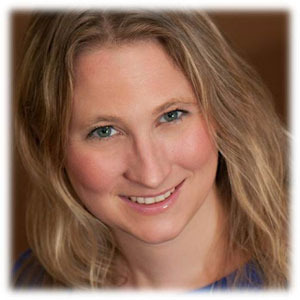 Jessica Brockmole spent several years living in Scotland, where she knew too well the challenges in maintaining relationships from a distance. She plotted her first novel on a long drive from the Isle of Skye to Edinburgh. She now lives in Indiana with her husband and two children.
Jessica Brockmole spent several years living in Scotland, where she knew too well the challenges in maintaining relationships from a distance. She plotted her first novel on a long drive from the Isle of Skye to Edinburgh. She now lives in Indiana with her husband and two children.
You can find Jessica on Facebook, Twitter, and her website. Find out more about LETTERS FROM SKYE here.


August 1, 2013
Exploring “The Wednesday Daughters” With Meg Waite Clayton
Since reading The Wednesday Sisters author Meg Waite Clayton has had an impact on me. I’ve written before about how that novel, about friendship and writing, left me reeling with the coveted “I want to do that” feeling. And then I did.
I interviewed Meg about her third novel, The Four Ms. Bradwells, and met her just a few months later in 2011, years after reading The Wednesday Sisters (more than once). Then, my journalism degree paid off! That interview made its way into the paperback edition of The Four Ms. Bradwells. Two years later, I participated in a panel, as a published author, at Printers Row Lit Fest in Chicago—the same lit fest where I’d met Meg. At the time I met Meg, The Glass Wives had not yet sold.
But no, this isn’t about me, although I hope it speaks to why talking to Meg about THE WEDNESDAY DAUGHTERS was so important to me. Meg has not only provided me with hours of reading pleasure, but with regular encouragement and friendship (and a lovely blurb for The Glass Wives). She is an author and a staunch advocate for women and women authors everywhere. If you don’t know her, haven’t read her (I’m biased, but start with The Wednesday Sisters!), you should.
Please welcome Meg Waite Clayton back to Women’s Fiction Writers!
Amy xo
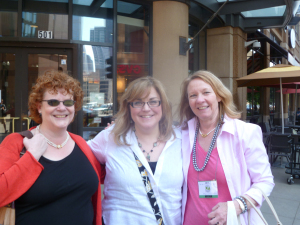
2011—Pamela Toler (author, critique partner, and dear friend), me, and Meg. That was a fan-girl day for me. Just ask Pamela. (Although I believe I behaved like a lady.)
Exploring “The Wednesday Daughters” With Meg Waite Clayton
 Amy: Let’s jump right in! While we know that The Wednesday Daughters is not a sequel to The Wednesday Sisters, how is it similar to its sort-of namesake and predecessor?
Amy: Let’s jump right in! While we know that The Wednesday Daughters is not a sequel to The Wednesday Sisters, how is it similar to its sort-of namesake and predecessor?
Meg: The Wednesday Daughters in one sense explores the fallout from some of the original Wednesday Sisters’ choices. So readers of Sisters may recall that Kath was in a very complicated marriage—and that echoes in the life of her daughter, Anna-Page, especially when it comes to relationships. (But you don’t have to have read The Wednesday Sisters to understand The Wednesday Daughters; you learn as much as you need to know about the background within the new book.)
Like The Wednesday Sisters, The Wednesday Daughters also has a very strong writing angle, in this case explored largely through Beatrix Potter’s writings. And then of course there is the friendship angle, which I find myself dipping into again, thanks to the wonderful friendships I have to draw on.
Amy: Was it difficult to separate the Sisters from the Daughters while writing the book, or did Daughters truly take on a life of its own?
Meg: These friends STARTED with lives of their own. I think the bigger problem was letting their mom’s have some of the airspace!
Amy: In my experience (which is limited) there’s usually a moment or a spark that spurs a bigger idea, whether that idea ever becomes a full novel or not. What was that spark for The Wednesday Daughters?
Meg: I wrapped up The Wednesday Sisters with an epilogue, and thought I was done with their stories. But then I was talking with someone about his children, who are biracial, and it dawned on me that Ally’s daughter Hope would likely have faced the kinds of identity issues many children of mixed race do. Those issues seemed really interesting to explore, and so many readers had asked if I would do a sequel that a “sequel of sorts”—which is the way I like to describe it—that involved the daughters of the original five friends seemed somehow meant to be.
Amy: Without giving anything away, I was fascinated by the secret code in Ally’s journals, and curious how you came up with this idea, which added another layer of secrecy for the Daughters to uncover.
Meg: One of the things I love about doing research is how many fascinating facts I find—things I could never make up. In researching for this one, I discovered that from age 14 to age 30, Beatrix Potter kept a journal written in a complicated code—almost 200,000 words—the length of two copies of The Wednesday Daughters and then some. That was certainly the inspiration. But I’ll let the reader discover why Ally writes in code.
Amy: What not only drew you to the setting of England’s Lake District, but made it the right setting for The Wednesday Daughters? And of course I have to ask…why Beatrix Potter? (I’ll admit those were some of my favorite parts of the novel, but it always fascinates me to find out an author’s logic, if there is any!)
Meg: Taking people out of their element tends to bring out the best and the worst in them. And the daughters live very demanding lives, so taking them away from home allows them room to consider their choices. It’s a lot easier to question our choices when we aren’t immersed in them.
Hope, Anna Page, and Julie might have gone anywhere, but the place they were going had to tie to Ally’s life. Hope’s mom was a writer of children’s stories, and I love Beatrix Potter’s books, which I read and reread over and over to my sons when they were young. I didn’t know much about Potter’s life other than that she was from England, but I knew from her writing that she had to be an interesting character.
So I set Ally off on a journey to England to write a Beatrix Potter biography, although she was in fact in search of answers about her own life. I had no idea when I began this novel that the English Lake District would be such a magical place, or that Beatrix Potter would be so fascinating. I spent a few weeks in a very tiny cottage on Lake Windermere and did a lot of hiking in the Lake District. You can soak in Beatrix Potter’s life there every time you step out the door. I also did extensive research on Beatrix Potter’s life and work: visiting Hill Top Farm and her husband’s office in Hawkeshead; hiking to the tarn where she rowed with her husband in the evening; reading her letters and decoded journals; reading biographies of her; rereading her books; and learning about how her drawings were done.
Amy: Your novels center on friendship and family, and the different ways these intertwine, and be challenged. I always learn something from my characters. Did you learn anything unexpected from Anna Page, Julie, and Hope?
Meg: I did! And lest I spoil any reader’s experience of the book, I’ll hope to let them learn from these friends themselves!
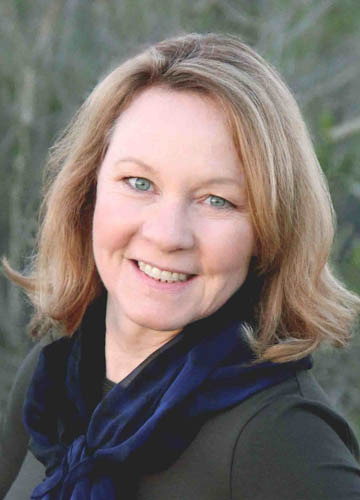 Meg Waite Clayton is the nationally bestselling author of The Four Ms. Bradwells, The Wednesday Sisters, and The Language of Light—all national book club picks—as well as the forthcoming The Wednesday Daughters (July 2013). Her first novel was a finalist for the Bellwether Prize (now the PEN/Bellwether), and her novels have been translated into languages from German to Lithuanian to Chinese. She’s written for The Los Angeles Times, The San Jose Mercury News, Writer’s Digest, Runner’s World, The Literary Review, and public radio. Her “After the Debate” on Forbes online was praised by the Columbia Journalism Review as “[t]he absolute best story about women’s issues stemming from the second Presidential debate.” An Order of the Coif graduate of the University Michigan Law School, she lives in Palo Alto, California.
Meg Waite Clayton is the nationally bestselling author of The Four Ms. Bradwells, The Wednesday Sisters, and The Language of Light—all national book club picks—as well as the forthcoming The Wednesday Daughters (July 2013). Her first novel was a finalist for the Bellwether Prize (now the PEN/Bellwether), and her novels have been translated into languages from German to Lithuanian to Chinese. She’s written for The Los Angeles Times, The San Jose Mercury News, Writer’s Digest, Runner’s World, The Literary Review, and public radio. Her “After the Debate” on Forbes online was praised by the Columbia Journalism Review as “[t]he absolute best story about women’s issues stemming from the second Presidential debate.” An Order of the Coif graduate of the University Michigan Law School, she lives in Palo Alto, California.
You can connect with Meg on Facebook, Twitter, and her website.


Women's Fiction Writers
- Amy Sue Nathan's profile
- 543 followers



